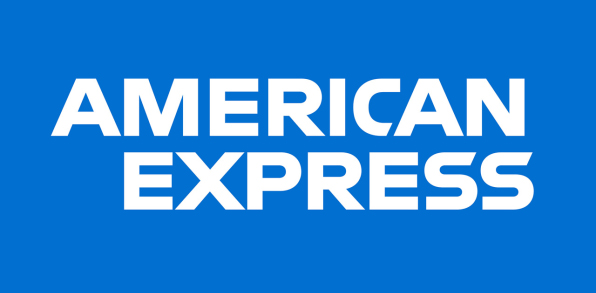Digital workspaces have emerged as the most crucial factor in productivity in today’s workplace. The efficiency of your digital workspace strongly impacts your overall performance, directly affecting everything from email management to project collaboration.
Having a well-organized digital workplace may help you optimize your workflow, reduce the number of distractions you face, and increase your productivity.
This blog will provide practical step-by-step instructions to optimize your digital workspace, maximizing the most of your time and resources.
Declutter desktop
The procedure could be faster if a desktop or laptop is used only for business. Finding out which files you use often but have yet to see is an excellent place to start.
The procedure can lengthen if you do business on your computer. First, sort all your files into personal and work folders. Make a folder to store all your files; when you’ve gone through them all, sort the folders by subject.
Although it takes time, many skip this step, even if it initially seems clear. But getting back on track is crucial!
Streamline your email inbox.
Most email services, including Outlook, Gmail, and Yahoo, have features for organizing emails. You may organize emails in your inbox by creating folders for certain people, projects, departments, or discussions. Whatever method you choose to file the emails, check on them regularly to avoid missing anything.
Priority organizing is another option; if you have a critical email thread that you need to get back to, you can always “pin” or “flag” it. It is a smart move if you’ll have to travel back and forth during the day since you’re very busy.
List what needs to be done well.
Think about the tools and equipment you need to do your task appropriately. Are there any items you lack, or do you have all you require? If you want to increase the work you get done, list everything you need to put in your workspace.
Assessing your workplace may help you better understand what needs to be done to optimize your environment for optimal productivity.
Remove unnecessary apps.
Have you used programs you downloaded a few months ago? Rip them out. Clear up unnecessary files, fix any security holes, and prioritize the programs you need most.
Remove unused applications or software from your digital tools regularly to declutter them. Keep productivity tools to minimize distractions and keep your workplace organized.
Centralize your documents and files.
The cornerstone of every well-organized digital workstation is centralizing relevant papers and data. Vital papers will always be within easy reach, and you’ll spend less time looking for them. Using a central place is one way to keep track of all your files and prevent version control problems.
Office 365 is a significant tool when consolidating your data and papers. It boasts several characteristics, like:
- OneDrive: With OneDrive, you can save all your files in the cloud and access them from any device, anywhere. It also makes it easy to share and save documents to the cloud since it works with other Office 365 applications.
- SharePoint: SharePoint offers a centralized platform for document management, sharing, and team communication. With its help, teams may collaborate on projects, store data, and control versions.
Protect your data
Talking about data storage and safety is essential, particularly if you have a lot of downloads.
Important papers should be stored on a high-storage hard drive in case your computer malfunctions or is hacked. If you share files and refer to them often, having a shared drive in the cloud is essential where all your team members can post papers.
When dealing with important documents stored on the shared drive, such as password logs or financial records, giving the file a unique code name understandable only to you and your team is advisable. It serves as an additional safeguard against unauthorized viewers.
Completing this stage safeguards your organization from data loss or theft.
Use compliance automation.
There may be many rules, regulations, and laws to follow. For this reason, it may be challenging to guarantee full compliance, mainly if all tasks are performed manually.
Ensuring you or your staff is well-versed in these intricate requirements could be a hassle as you do your daily business.
Employees should always remember data security and compliance while communicating via email or any other medium. Making mistakes is an inherent aspect of being human, as we have already demonstrated.
Minimize distractions
Distractions are your worst enemy—your phone, TV, cluttered environment, and social media keep drawing you away from your work.
If you want to stay focused, you must say goodbye to distractions. Of course, this doesn’t mean throwing your devices away. Instead, put your phone on DND (do not disturb), turn off your TV, and pause social media notifications. Declutter your desk and the space around you to ensure nothing cracks your focus.
Use a calendar to track your tasks.
If you want to improve your organization, you need to start thinking ahead, and putting things down on a calendar might be the key to your success in this endeavor.
Document everything, from the most minor jobs to the most significant projects and events.
You can also add personal items and assign tasks on the calendar. It will prevent overlaps and confusion and give you a clear idea of your availability and workload.
Manage Your Passwords
With so many online services requiring different passwords, it’s easy to lose track of what they are.
Consider using a password manager such as LastPass or 1Password to keep track of everything. It eliminates a lot of mental strain, making it a top choice among job management solutions.
Additionally, establish a method to facilitate the memorization of your passwords; for instance, use a handful of often-used variants of your password.
Additionally, allocate some time to examine your web browser’s password management system and review all stored data. Even though you might like to retain some, deleting information no longer required for security reasons is advisable.
Take regular breaks
As a human, you are incapable of functioning continuously like a machine. Taking frequent breaks is an essential component of maintaining a good workweek. During intervals, you can unwind, regain your concentration, and give your mind a respite. In addition, you can engage in stretching exercises and enjoy the benefits of being outside.
Continuously working without breaks inevitably leads to a decline in attention. You will feel overwhelmed and exhausted, which will decrease your performance. You will experience an accumulation of duties, resulting in a loss of focus on your priorities and workload, ultimately leading to disarray.
Although breaks may seem unproductive, they enhance productivity. Efficiently plan your schedule and excel in your daily tasks.
Final Thoughts
Organizing your digital workspace is an ongoing process that requires attention and effort. You can create a workspace that boosts efficiency and productivity by implementing effective file management strategies, optimizing email and task organization, enhancing collaboration, and leveraging tools like Office 365.
You can check out the Office 365 download now and enjoy these excellent features for your digital workspace.
Remember, the goal is to create an organized digital environment and maintain it consistently. Regularly review and refine your practices to adapt to changing needs and technologies. With a well-organized digital workspace, you’ll be better equipped to handle tasks, collaborate with your team, and achieve your professional goals.




